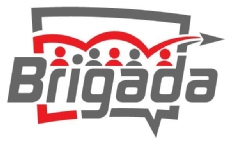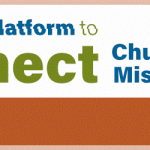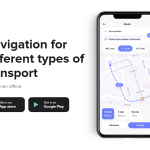This past week, a friend named Daniel wrote, asking which Learning Management System (LMS) would work best for advising, coaching, and training others. An LMS system is basically an online learning platform. For every 100 Brigada participants, we’re thinking there are probably going to be 80 different LMS platforms. The question is – which is the best? Did you *buy* one, *rent* one or *build* your own? Please comment – and don’t forget to tell us the website we need to visit to see pricing. Thank you in advance for any help you can give!
10) Help Daniel Determine Which Learning Management System (LMS) Is Best













As a now retired former missionary/educator, I don’t have any “skin in the (current) game.” Yet, as one who was slightly “ahead of the curve” technologically (compared with the “older than I” Bible college professors back in the day, who for a time was tasked with “administrating” a Moodle LMS system at Ozark Christian College (there’s a “whole ‘nother story” in that), I rejoiced when the college decided to ditch the open-source & “free” LMS, Moodle, in favor of a commercial LMS, Canvas. In those days, one of my colleagues, in administration remarked that Moodle was the “most expensive free LMS in the world.” It was written by bonafide nerds, for bonafide nerds. Suffice it to say that I enjoyed USING Canvas much more than I enjoyed USING and ADMINSTRATING Moodle.
I use Moodle because it is free, stable, plays well on Linux servers, and has a strong support community, is regularly updated and has many themes and plugins. However, it is less than intuitive and may confuse some learners. https://Moodle.org
*Do NOT get a new or recent LMS because they often vanish into this air. pick a well-known LMS
* Many of the LMS comparison sites are often weighted toward a particular product and are not reliable.
*Getting the right theme (appearance) for your students is critical.
Define best.
Best for the organization/learning institution? Best for a highly literate academic course creator or learner? Best for the end user to access on their phone in a location that has limited technology? Best to use to replace a college-level course rooted in a lecture series/list of books to read? Best to support a hybrid model — online learning with live learning? Best for global interactions? Best for multi-language? Best for your budget?
What will make the system used and useful to the target audience/learners? And easy for the course designer?
No one magic LMS that will be best for everyone in every situation.
Key to finding the best LMS for your situation will be clarity on what will make it most used and useful.
Here’s one NOT to use: At Didasko Missions Academy we’ve been using Open edX for 8 years or so. It’s very good once it’s running, but it’s an expensive nightmare to upgrade. Stay away from this one.
Back in the day before we evaluated Moodle, Sakai and Canvas. In those days, Canvas was extremely difficult to install, and is a resource hog – meaning you need a much bigger server to host the same number of students than for the others. But it is certainly the most user-friendly LMS I’ve personally looked at. Also back in the day, Moodle and Sakai were very user un-friendly, but both have been given a major face-lift and look much and more straightforward. Within a few months we’re going to do a serious evaluation of Moodle with the aim of switching over.
So for new users: if you have money and resources, Canvas would be good. If you don’t, have a look at Moodle.
Try Sakai here: https://trysakai.longsight.com/portal/site/!gateway/tool/!gateway-310
Try Moodle here: https://docs.moodle.org/22/en/Try_Moodle
Henry Vermont, Didasko Missions Academy
After examining many LMS, CIT decided to use Thinkific. It’s simple to use and intuitive for developing courses. I have used Canvas and Moodle but found Thinkific to be better for what you pay.
Here’s our story. Before building an eLearning website from the ground up, we talked with our good friends at Mission Media University. They had compiled a rather extensive spreadsheet of information on many of the available LMS platforms (back in 2020), and graded them from A to D, with 25 making at least one of those grades, and another 24 that didn’t make the cut. In short, this helped us narrow our search for the solution that seemed to fit best.
We landed on a WordPress-based LMS called LearnDash. The site now has 75 lessons, with written, audio and video content. We chose the Elementor page builder to help us customize the UX. We also chose a theme from BuddyBoss that facilitates group forums, messaging, and other interactions for our coaches and students. And we upgraded that theme to create an app version as well.
We have several plugins that have allowed us to improve the user experience. Like adding a note taking option, a glossary module, a certificate builder, and integration for Zoom and Zapier. One other plugin we integrated (Translate Press) makes our site available in both Spanish and Arabic.
We currently have over 430 students in the course, with 45 graduates to date. These students come from 34 countries.
Overall, LearnDash has allowed us to start with a minimum product and iterate to the point where we’re very happy with the course we offer now. Feel free to write with additional questions.
I would be seriously interested in viewing that evaluation spreadsheet.
Just to add to what Bob has shared about our platform, which you can see at nomadacademy.org, I thought I would link to the pricing page for LearnDash below. However, it’s important to remember that there are themes and plugins that increase our overall cost:
https://www.learndash.com/pricing-and-purchase/?gad_source=1&gad_campaignid=15514724520&gbraid=0AAAAAoKFkxwtUgHyurtmzFJAiLMsJswNZ&gclid=Cj0KCQjw8cHABhC-ARIsAJnY12waDxWm7HB8UmAJG00DBX4VTinZTsfoGiTbCPo3r1clc3MuN8u6emkaAoAbEALw_wcB
At Literacy and Evangelism International we have been using Google Classroom for our on-line learning courses. These have been useable by our international trainees who join the courses. It does involve copying the courses each year.
These are great responses. One user chose to write the editor instead of comment here. Here comment:
“Our organization selected SkyPrep LMS – because they gave us a great package for a nonprofit, throwing in lots of “premium” options for free, and some at a la carte prices. I looked at many – and for the price – I think we got a good deal with room to grow if we need to.”
Whatever you do as you look at which LMS is the ‘best’ for you, head on over to Grow2Serve… they are professional online missions course creators! Their business is to help mission orgs design online learning systems. Give Mark at Grow2Serve a shout and for sure they can help you!
Following up on my earlier comment about our experience with choosing an LMS, Clyde Taber at MMU was willing to not only share their spreadsheet with everyone, but allow editing so that this list can be updated as new information becomes available.
So here is that link: https://docs.google.com/spreadsheets/d/1AQKm-f8838S5LzfsPuH2zri8SIOtG4ZQUa3l5SRwAv0/edit?usp=sharing
Hope it helps your ministry in making the decision about an LMS that meets your needs! And feel free to help this document stay current!!
Brilliant. Absolutely brilliant, everyone. This is soooooooooo helpful. I’ll have to message “Daniel” to make sure he’s seeing all this. Thank you – everyone!
Dan, I don’t see TalentLMS listed. Very reasonably priced and user friendly. Does most everything that the pricier platforms offer, with less bells and whistles.
I am a fan of Pathwright. We have developed various training pathways to onboard new global workers with Converge International Ministries and our national office uses it to train church boards and church planters. Additionally we use it in partnership with Kairos University for any of our deployed global workers who want to work on a Master of Arts or D.Min. degree. Kairos University also uses Pathwright and has helped a number of indigenous leaders grow as disciple-makers, pastors, leaders in community cohorts, and earn a degree in the process. It allows you to embed audio, video, links to articles into lessons, courses, pathways, form cohorts and assign teachers, mentors, etc. It is very “new designer” friendly. Pathwright – https://www.pathwright.com/pricing